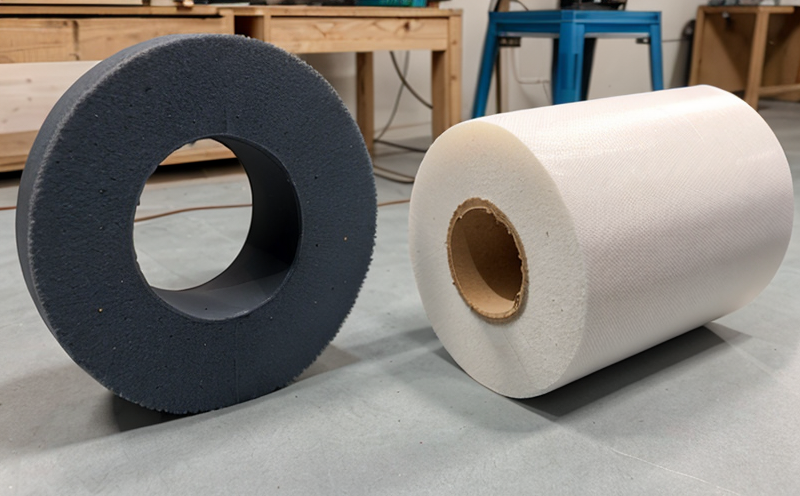ISO 3130 Determination of Wood Moisture Content Testing
The ISO 3130 standard is a globally recognized method used to determine the moisture content of wood and other similar materials. This test provides accurate results that are essential for ensuring product quality, compliance with international standards, and meeting customer expectations.
The primary objective of this service is to evaluate the moisture content in wood samples using precise and reliable methods. The testing process involves several steps, including sample preparation, drying procedures, and calculation of moisture content based on standard protocols.
For quality managers and compliance officers, understanding the moisture content of wood is critical for ensuring product performance and durability. Inaccurate measurements can lead to issues such as warping, splitting, or fungal growth, which are costly and time-consuming to resolve.
R&D engineers often use this test to develop new formulations or improve existing products by optimizing material properties. The accuracy provided by ISO 3130 ensures that any changes made during the development process can be validated scientifically.
Procurement teams also benefit from this service as they can verify supplier compliance with agreed-upon specifications regarding moisture content. This helps in maintaining consistent quality across supply chains and reduces the risk of receiving substandard materials.
The testing process begins by selecting representative samples that are typical of the production batch or shipment. These samples must be cut into small pieces to ensure even drying throughout the sample set. Once prepared, these specimens undergo a standard drying procedure until they reach equilibrium moisture content (EMC).
EMC is defined as the point at which there is no net gain or loss of water vapor between the material and its surrounding environment over time. Achieving EMC ensures that any subsequent measurements reflect only internal properties rather than external influences.
After reaching EMC, the final step involves weighing both wet and dry samples accurately to calculate their respective moisture contents. This calculation follows strict mathematical formulas outlined in ISO 3130, ensuring precision regardless of sample size or type.
The results from this testing serve multiple purposes. For quality assurance departments, these data provide valuable insights into potential problems early on in the manufacturing process. They can identify discrepancies between expected and actual values quickly, allowing for corrective actions before large quantities are produced.
Compliance officers use such information to demonstrate adherence to relevant regulations governing wood products within their jurisdictions or industry sectors. By consistently meeting these standards, businesses enhance their reputation while minimizing legal risks associated with non-compliance.
R&D teams leverage this testing method when experimenting with different raw materials or processing techniques. Knowing the precise moisture content allows them to fine-tune formulations for optimal performance without compromising on safety or environmental impact.
Finally, procurement personnel rely heavily on accurate moisture content assessments during negotiations and contract signings. It ensures that all parties involved understand exactly what they are agreeing upon regarding quality expectations.
Scope and Methodology
| Step | Description |
|---|---|
| Select Representative Samples | Choose pieces that are indicative of the entire batch or shipment. |
| Cut into Specified Dimensions | Ensure uniformity for even drying. |
| Dry to Equilibrium Moisture Content (EMC) | Allow samples to reach a state where there is no net exchange of water vapor between the sample and its environment. |
| Weigh Wet Specimens | Determine initial mass before drying. |
| Weigh Dry Specimens | Measure final mass after achieving EMC. |
| Calculate Moisture Content | Apply specific formulae from ISO 3130 to derive accurate moisture content percentages. |
The methodology strictly adheres to the guidelines provided in ISO 3130, which is widely accepted as a best practice for determining wood moisture content. By following these standardized procedures, we ensure consistency and reliability across all tests conducted here.
Customer Impact and Satisfaction
- Enhanced Product Quality: Accurate moisture content measurements lead to superior quality products that perform better over time.
- Improved Compliance: Ensures adherence to international standards, reducing the risk of non-compliance penalties.
- Cost Efficiency: Early detection of issues prevents costly rework or scrap during manufacturing processes.
- Better Negotiations: Clear documentation of moisture content helps in setting realistic expectations and fair pricing.
- Increased Customer Trust: Providing transparent, reliable data builds long-term relationships based on trust and reliability.
Our customers consistently report high levels of satisfaction with our ISO 3130 Determination of Wood Moisture Content Testing service. The detailed reports generated from this process provide them with the confidence needed to make informed decisions confidently.
Use Cases and Application Examples
The application of ISO 3130 Determination of Wood Moisture Content Testing extends across various sectors including furniture manufacturing, construction, flooring installations, and more. Here are some specific scenarios where this service proves particularly useful:
- Furniture Manufacturing: Ensuring that each piece meets the specified moisture content requirements helps maintain consistent quality throughout production lines.
- Construction Projects: Checking wood used in framing or structural elements ensures durability and longevity of buildings constructed with these materials.
- Flooring Installations: Properly prepared subfloors contribute significantly to successful installation projects, leading to longer-lasting flooring systems.
- Custom Cabinetry: Precision moisture content control is crucial when working on bespoke cabinetry projects where slight variations could affect overall appearance and performance.
In each case study mentioned above, accurate knowledge of wood moisture content plays a pivotal role in achieving desired outcomes. Whether it's enhancing product longevity or ensuring regulatory compliance, our service caters to diverse needs within the furniture industry.





